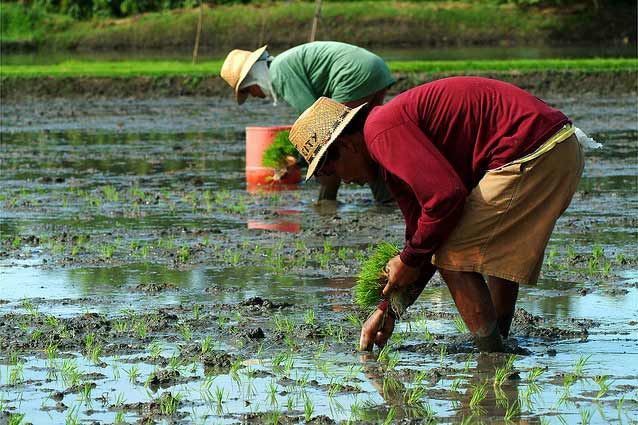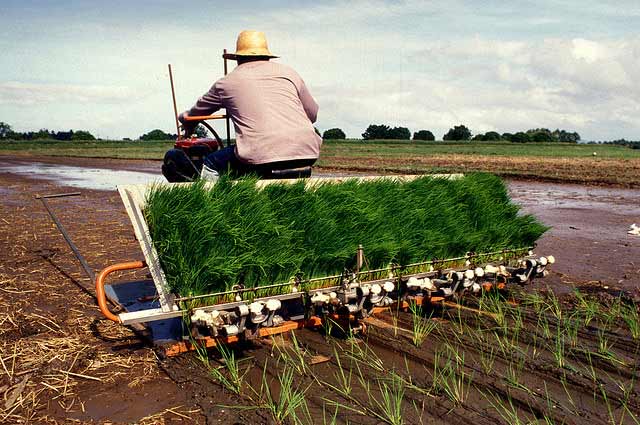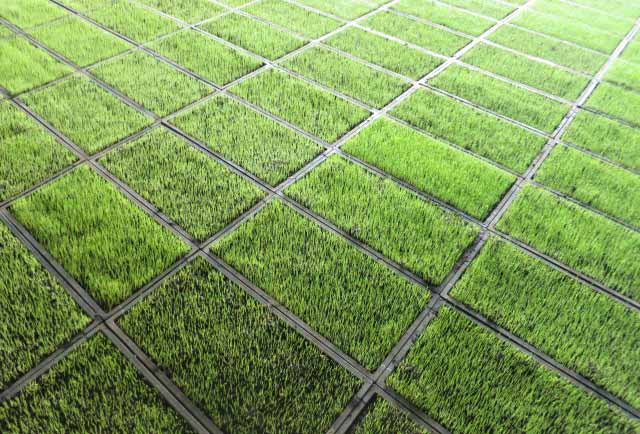Transplanting
Transplanting is commonly practiced as a method of weed control for wet or puddled fields. It requires less seed but much more labor compared to direct seeding. Also, transplanted crops take longer to mature due to transplanting shock.
Prior to transplanting, seedlings need to be raised in a nursery.
Read: How to prepare seedlings for transplanting
Transplanted crops can be established manually or by machine.
Manual transplanting
 Majority of rice fields in Asia are manually transplanted.
Majority of rice fields in Asia are manually transplanted.
Depending on soil type, one hectare of rice requires 25 to 30 person days to establish.
Read: How to pull rice seedlings for transplanting
Manual transplanting can be done in two methods:
- Random Method
In random method, seedlings are transplanted without a definite distance or space between plants.
When transplanting is done at random, equal distances between hills are difficult to determine but it is essential that the estimated distances should not be too close or too wide (not less than 10 cm and not more than 25 cm) to complement control of weeds through early shading by rice canopies.
- Straight-row Method
This method follows uniform spacing or pattern.
Plant spacing is an important factor in transplanting rice. Proper spacing can increase the yield by 25−40% over improper spacing. You will also save money on inputs, labor, and materials.
Training resource: How to properly space your plants
Straight rows facilitate management practices such as hand or rotary weeding and application of fertilizers, herbicides, or insecticides. Optimal plant spacing may also be achieved through this method.
Transplant 2−3 seedlings of 15−21 days wet-bed or dry-bed grown seedlings at 20 x 20 cm spacing.
Closer spacing (15 x 15 cm or 10 x 10 cm) may be used depending on the availability of planters and the cost of transplanting. This is advantageous when weed control is inadequate.


 Mechanical transplanters have built-in trays or seedling boxes.
Mechanical transplanters have built-in trays or seedling boxes.








